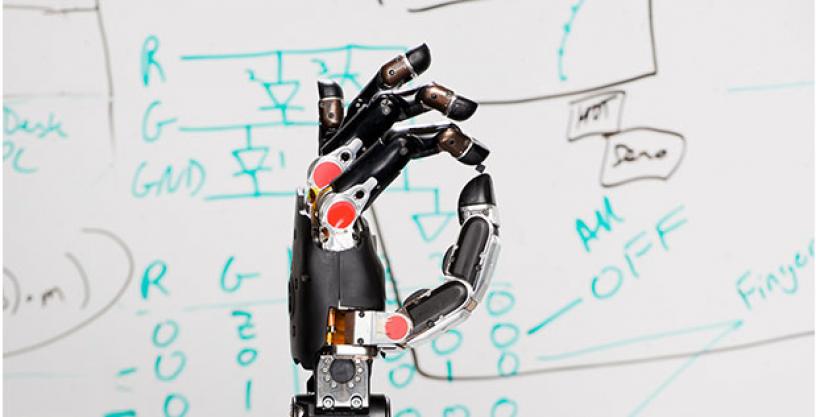Summary

Thanks to improvements in body armor and combat casualty care, military Service members are now surviving severe battlefield injuries that involve traumatic limb amputation. However, because these survivors are predominantly young, they must live with their injuries for decades.
This severely diminishes affected individuals’ quality of life and places a massive responsibility on the military's medical and rehabilitation system.
The Revolutionizing Prosthetics program seeks to address these challenges by restoring near-natural hand and arm control to people living with the loss of an upper limb. The resulting technologies could improve warfighter rehabilitation, restore function and independence to individuals living with amputation or paralysis, and offer wounded warriors the prospect of eventual return to duty.
Revolutionizing Prosthetics performer teams developed two anthropomorphic, advanced, modular prototype prosthetic arm systems, including sockets, which offer users increased dexterity, strength, and range of motion over traditional prosthetic limbs. The program has developed neurotechnology to enable direct neural control of these systems, as well as non-invasive means of control.
DARPA is also studying the restoration of sensation, connecting sensors to the arm systems and returning haptic feedback from the arm directly back to volunteers’ brains.
The LUKE Arm system was originally developed for DARPA by DEKA Research and Development Corporation. The modular, battery-powered arm enables dexterous arm and hand movement through a simple, intuitive control system that allows users to move multiple joints simultaneously. Years of testing and optimization in collaboration with the Department of Veterans Affairs led to clearance by the U.S. Food and Drug Administration in May 2014 and creation of a commercial-scale manufacturer, Mobius Bionics, in July 2016. In June 2017, the first two LUKE Arm systems were prescribed to veterans.
The Modular Prosthetic Limb, developed for DARPA by the Johns Hopkins University Applied Physics Laboratory, is a more complex hand and arm system designed primarily as a research tool. It is used to test direct neural control of a prosthesis. In studies, volunteers living with paralysis have demonstrated multi-dimensional control of the hand and arm using electrode arrays placed on their brains, as well as restoration of touch sensation via a closed-loop interface connecting the brain with haptic sensors in the arm system.
In addition to their demonstrated benefit to disabled veterans, the dexterous capabilities demonstrated by the Revolutionizing Prosthetics program have already been applied to small robotic systems used by the military to manipulate unexploded ordnance.
This program is now complete.
This content is available for reference purposes. This page is no longer maintained.
